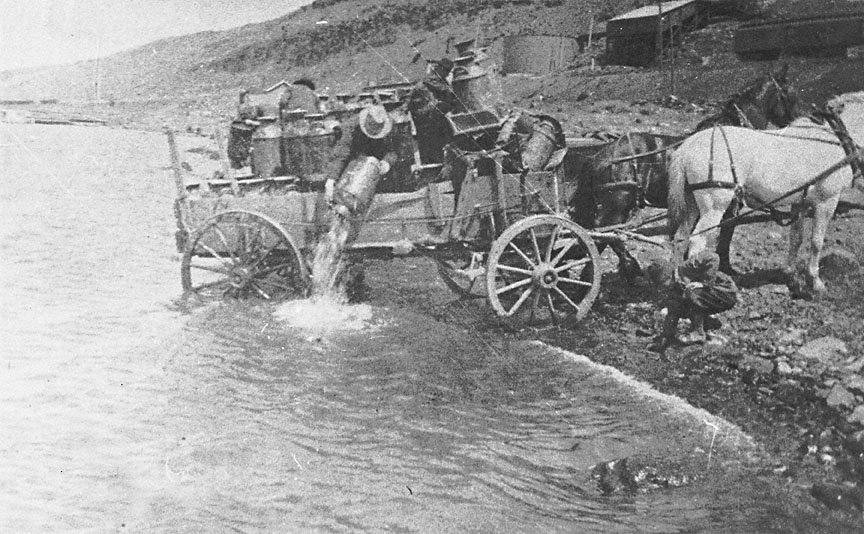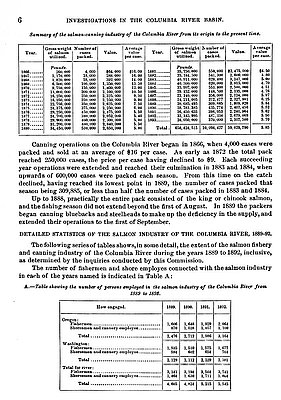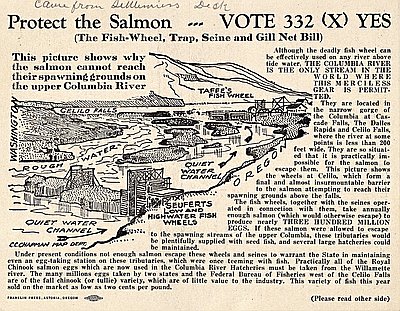This 1915 photograph shows people releasing salmon fry into the Columbia River. The photograph is from the collection of Marion T. Weatherford, who wrote local histories of Arlington and the Deschutes-Umatilla Plateau.
In 1877, fish culturist Livingston Stone established the first Columbia River Basin hatchery on the Clackamas River. Members of the Oregon and Washington Fish Propagating Company, an organization of cannery owners, commissioned the hatchery in an attempt to replenish declining Columbia River commercial chinook salmon catches, which fell from 30,600,000 pounds in 1876 to 25,840,000 pounds in 1877. By the 1890s, Columbia River salmon canneries were also packing cans of coho, sockeye, and chum salmon and steelhead for export to Great Britain and the U. S. East Coast. However, yearly catches continued to slowly decline.
Early fishery officials believed that it would be more effective to artificially propagate salmon rather than to attempt to protect streams and rivers from destructive human uses and alterations, such as logging, dams, and pollution. In 1909, the Oregon Fish and Game Commission built the Bonneville Central Hatchery, which became the headquarters of a state-wide hatchery system that planted young salmon fry into streams throughout the state.
Further Reading:
Taylor, Joseph E., III. Making Salmon: An Environmental History of the Northwest Fisheries Crisis. Seattle, Wash., 1999.
Ulrich, Roberta. “Empty Promises, Empty Nets.” Oregon Historical Quarterly 100, 1999:134-157.
Gile, Albion. “Notes on Columbia River Salmon.” Oregon Historical Quarterly 56, 1955:140-159.
Written by Kathy Tucker, © Oregon Historical Society 2002.



